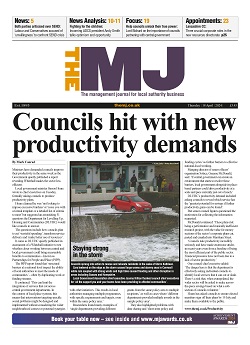Bradford is a diverse and vibrant city - the youngest and one of the most dynamic places in the UK. We have extraordinary assets but also significant challenges.
Bradford is a blueprint for modern Britain. If we can foster integration and close the inequalities chasm here, learning together we can achieve this nationally.
We have a good track record of supporting dialogue across our communities and tackling conflict. We challenge and respond to unacceptable or criminal behaviour, including hate crime and work hard with our partners to safeguard vulnerable people from extremism.
The national Schools Linking Project, with its evidenced impact on increasing respect for difference, began in Bradford and is still based here.
There have been three far right-wing demonstrations in our city and each time Bradfordians have shown their resilience by rejecting firmly divisive messages of hatred with integrity, dignity and unity.
We know that cohesive communities are not just about people of different race, faith, ability or economic background. It is equally important that elderly and young people feel safe walking around their neighbourhoods and women feel safe to enjoy our city, or live at home, without fear of abuse.
We see realising the potential of our citizens, particularly our entrepreneurial and energetic young population, as a key challenge - to strengthen our economy and deliver a better quality of life for everyone. Our economy is big, £9.2bn (GVA) with predicted growth of 25% over the next 10 years and we need to ensure our growing population has the right skills to access good jobs.
Too many of our young people do not achieve fully at school and our skills base is low, so we have invested in our partnership Get Bradford Working programme and we support innovative peer school improvement.
Our major employers have increasingly diverse workforces and this is an important trend which we work to accelerate.
We need more decent homes that people can afford to live in. There are some neighbourhoods in Bradford that are mono-cultural and have poor, uniform housing stock - which inevitably means the people living there have similar family make-ups and limited incomes.
We need to encourage the building of mixed housing stock to mirror the increasing diversity of wards outside the city centre which have changed as people have aspired to move into more prosperous areas.
Life expectancy in our district is still determined by where you are born, with a nine year gap to close through encouraging healthy lives and self-directed care.
Our district has a thriving third sector and volunteering ethos. We need to engage with all communities effectively, to ensure all our neighbourhoods are safe and clean, with people playing an active part in local decision making and co-produced services.
We are a district that celebrates, commemorates, works and plays together.
It is no coincidence that the first synagogue in the world to have a Muslim board member is in Bradford, or that during devastating flooding in December 2015 many different communities, including those not directly affected, worked tirelessly together to deliver relief.
In developing public realm with private sector partners we have achieved truly inclusive public spaces which are amongst the most diverse in the country in terms of the people enjoying them.
These public spaces include the Broadway shopping centre, which has just celebrated its first, very successful, year of trading and our multi award winning City Park - where over 3,500 people from all backgrounds recently came together to form an unbroken chain of linked heart shapes with their hands, creating a new world record.
Kersten England is chief executive of City of Bradford MDC
Want full article access?
Receive The MJ magazine each week and gain access to all the content on this website with a subscription.
Full website content includes additional, exclusive commentary and analysis on the issues affecting local government.
Already a subscriber? Login

